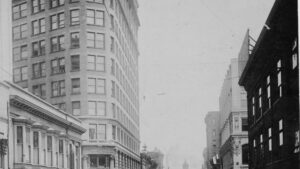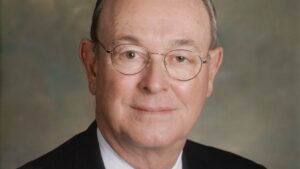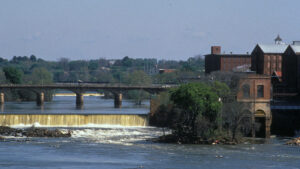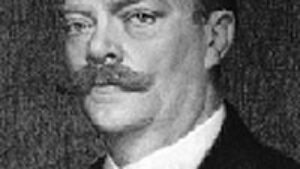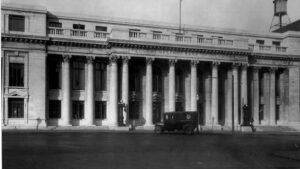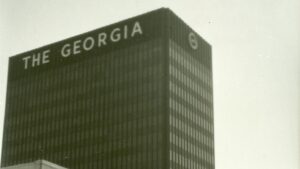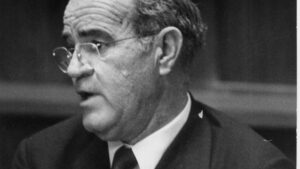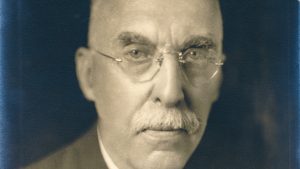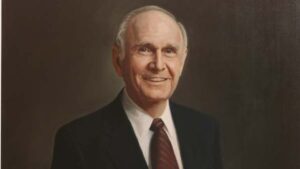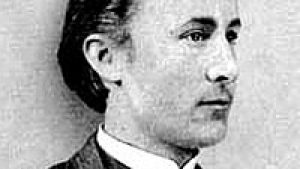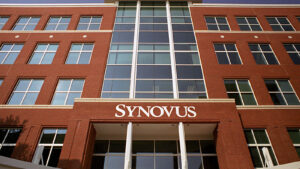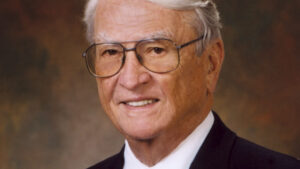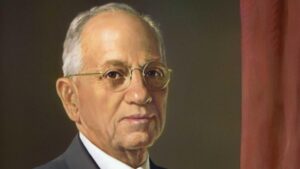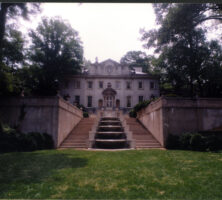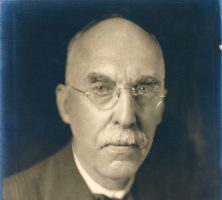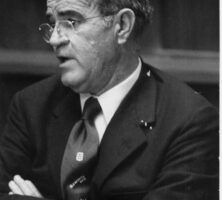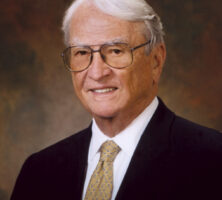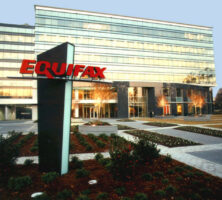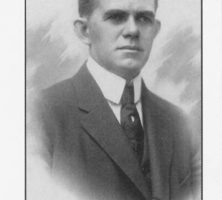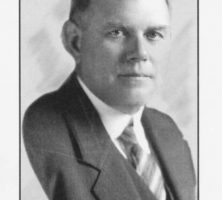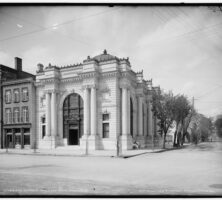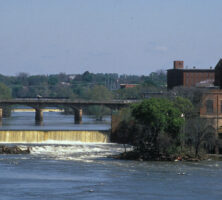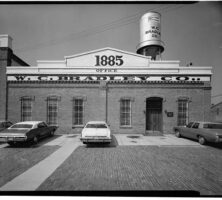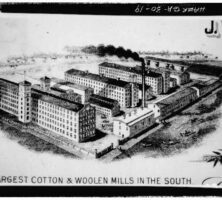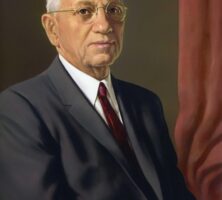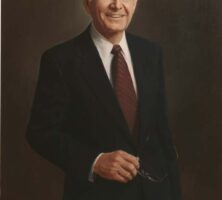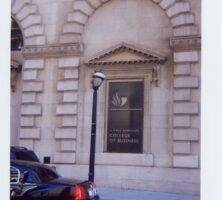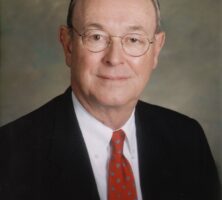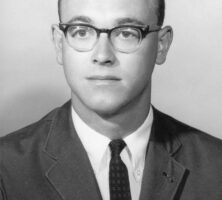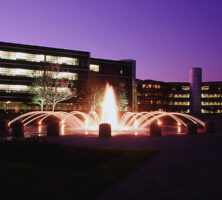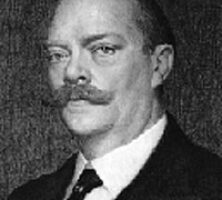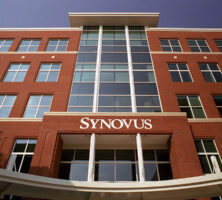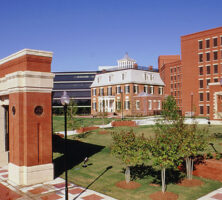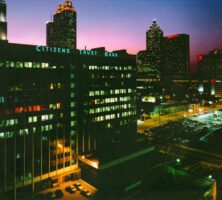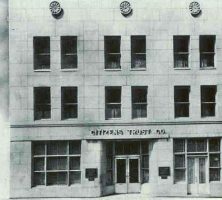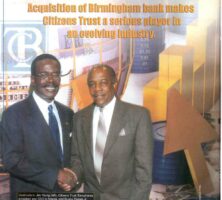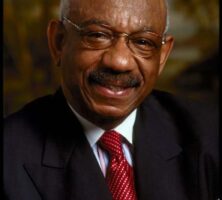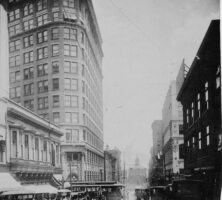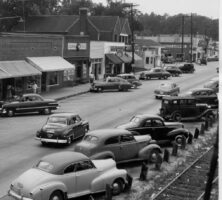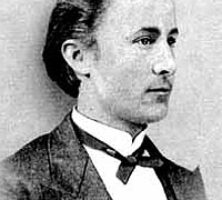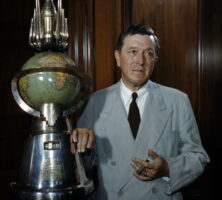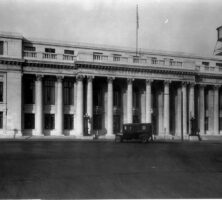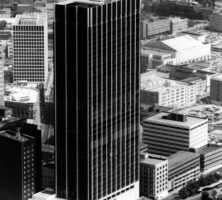The New Georgia Encyclopedia is supported by funding from A More Perfect Union, a special initiative of the National Endowment for the Humanities.
The Edward H. Inman (1925-28) House in Atlanta, also known as Swan House, is one of Philip Trammell Shutze's best-known works with the partnership Hentz, Adler and Shutze. Mrs. Inman chose the swan motif from which the house gets its name.
The New Georgia Encyclopedia does not hold the copyright for this media resource and can neither grant nor deny permission to republish or reproduce the image online or in print. Requests for permission to publish or reproduce the resource may need to be submitted to the Georgia Department of Community Affairs, Historic Preservation Division.
Walter McElreath was an Atlanta-based attorney, banking executive, legislator, and the founding president of the Atlanta Historical Society (today the Atlanta History Center).
Courtesy of Atlanta History Center.
The New Georgia Encyclopedia does not hold the copyright for this media resource and can neither grant nor deny permission to republish or reproduce the image online or in print. Requests for permission to publish or reproduce the resource should be submitted to the Atlanta History Center.
Mills B. Lane Jr., a native of Savannah, was president of Citizens and Southern National Bank, based in Atlanta, from 1946 to 1973. During his tenure Lane financed several major projects in the city, including the Atlanta Stadium, and worked to establish peaceful race relations in both Atlanta and Savannah.
Courtesy of Atlanta Journal-Constitution.
The New Georgia Encyclopedia does not hold the copyright for this media resource and can neither grant nor deny permission to republish or reproduce the image online or in print. All requests for permission to publish or reproduce the resource must be submitted to the Atlanta Journal-Constitution.
An International League baseball game is played at the Atlanta-Fulton County Stadium in 1965, the same year in which the facility was completed. In addition to sporting events, the stadium was used for concerts and other large gatherings before it was destroyed in 1997 to make way for Turner Field (later Center Parc Stadium).
Courtesy of Atlanta Journal-Constitution.
The New Georgia Encyclopedia does not hold the copyright for this media resource and can neither grant nor deny permission to republish or reproduce the image online or in print. All requests for permission to publish or reproduce the resource must be submitted to the Atlanta Journal-Constitution.
Columbus native William Bradley Turner has been a business, civic, and philanthropic leader through his work with the Synovus Financial Corporation, the W. C. Bradley Company, the Bradley-Turner Foundation, and the Pastoral Institute.
Courtesy of Synovus
The New Georgia Encyclopedia does not hold the copyright for this media resource and can neither grant nor deny permission to republish or reproduce the image online or in print. All requests for permission to publish or reproduce the resource must be submitted to the rights holder.
The New Georgia Encyclopedia does not hold the copyright for this media resource and can neither grant nor deny permission to republish or reproduce the image online or in print. All requests for permission to publish or reproduce the resource must be submitted to the rights holder.
Equifax, one of the largest credit-reporting agencies in the country, collects data on more than 400 million credit holders nationwide. Some of the company's data storage equipment is pictured circa 1978.
Courtesy of Equifax
The New Georgia Encyclopedia does not hold the copyright for this media resource and can neither grant nor deny permission to republish or reproduce the image online or in print. All requests for permission to publish or reproduce the resource must be submitted to the rights holder.
One of the country's top credit-reporting agencies, Equifax is one of Georgia's most profitable companies. Its headquarters are located on Peachtree Street in downtown Atlanta.
Courtesy of Equifax
The New Georgia Encyclopedia does not hold the copyright for this media resource and can neither grant nor deny permission to republish or reproduce the image online or in print. All requests for permission to publish or reproduce the resource must be submitted to the rights holder.
With his brother Guy, Cator Woolford started the Retail Credit Company, the precursor to Equifax. In the late 1920s Woolford befriended Franklin D. Roosevelt and was one of the founders of the Roosevelt Warm Springs Institute. Woolford's former estate in Druid Hills is now the site of the Frazer Center and the Cator Woolford Gardens.
Courtesy of Equifax
The New Georgia Encyclopedia does not hold the copyright for this media resource and can neither grant nor deny permission to republish or reproduce the image online or in print. All requests for permission to publish or reproduce the resource must be submitted to the rights holder.
Guy Woolford and his brother, Cator, founded Retail Credit Company, which became Equifax in the 1970s. As a trustee of the Fernbank Science Center in Atlanta, Woolford helped to acquire land that would become a buffer for the Fernbank Forest.
Courtesy of Equifax
The New Georgia Encyclopedia does not hold the copyright for this media resource and can neither grant nor deny permission to republish or reproduce the image online or in print. All requests for permission to publish or reproduce the resource must be submitted to the rights holder.
The Georgia Railroad Bank Building, known today as the Wells Fargo Building, was erected in 1967 on Broad Street in Augusta to serve as headquarters for the First Railroad and Banking Company of Georgia. The building was designed by architect Robert McCreary.
Courtesy of Augusta Richmond County Historical Society, Reese Library Loose Photographs Collection, Broad Street Series.
The New Georgia Encyclopedia does not hold the copyright for this media resource and can neither grant nor deny permission to republish or reproduce the image online or in print. All requests for permission to publish or reproduce the resource must be submitted to the rights holder.
The Georgia Railroad Bank and Trust Company in Augusta, pictured circa 1903, was established in Athens in 1833 as the Georgia Railroad Company. Two years later the company began its banking operations, and in 1840 it moved its headquarters to Augusta.
Courtesy of Library of Congress, Prints and Photographs Division
The New Georgia Encyclopedia does not hold the copyright for this media resource and can neither grant nor deny permission to republish or reproduce the image online or in print. All requests for permission to publish or reproduce the resource must be submitted to the rights holder.
The New Georgia Encyclopedia does not hold the copyright for this media resource and can neither grant nor deny permission to republish or reproduce the image online or in print. All requests for permission to publish or reproduce the resource must be submitted to the rights holder.
In 2003 the W. C. Bradley Company's real estate division began restoring the site of the old Eagle and Phenix Mills in Columbus. Today the restored brick structure has been converted to condominiums.
The New Georgia Encyclopedia does not hold the copyright for this media resource and can neither grant nor deny permission to republish or reproduce the image online or in print. Requests for permission to publish or reproduce the resource may need to be submitted to the Georgia Department of Community Affairs, Historic Preservation Division.
The New Georgia Encyclopedia does not hold the copyright for this media resource and can neither grant nor deny permission to republish or reproduce the image online or in print. All requests for permission to publish or reproduce the resource must be submitted to the rights holder.
The W. C. Bradley Company, pictured circa 1968, was founded in Columbus in 1885. The company was involved in a variety of concerns, including groceries, steamboats, fertilizer, cotton, textiles, and real estate. As of 2005 the organization was Georgia's nineteenth-largest privately held company.
Courtesy of Library of Congress, Prints and Photographs Division, Historic American Engineering Record Collection, #HAER GA,108-COLM,23-7.
The New Georgia Encyclopedia does not hold the copyright for this media resource and can neither grant nor deny permission to republish or reproduce the image online or in print. All requests for permission to publish or reproduce the resource must be submitted to the rights holder.
Eagle and Phenix Mills, built in Columbus around 1868, was eventually acquired by the W. C. Bradley Company, which was founded in 1895 by financier and philanthropist W. C. Bradley. In 2003 the company began a redevelopment project on the old mill site.
Courtesy of Library of Congress, Prints and Photographs Division, Historic American Engineering Record, #HAER GA,108-COLM,17-19.
The New Georgia Encyclopedia does not hold the copyright for this media resource and can neither grant nor deny permission to republish or reproduce the image online or in print. All requests for permission to publish or reproduce the resource must be submitted to the rights holder.
D. Abbott Turner, the president and chairman of the board for the W. C. Bradley Company, was a prominent businessman and philanthropist in Columbus. In 1961 Turner established the D. Abbott and Elizabeth Bradley Turner Foundation, known today as the Bradley-Turner Foundation.
Courtesy of Epworth By The Sea
The New Georgia Encyclopedia does not hold the copyright for this media resource and can neither grant nor deny permission to republish or reproduce the image online or in print. All requests for permission to publish or reproduce the resource must be submitted to the rights holder.
J. Mack Robinson, a prominent Atlanta businessman and philanthropist, began his career as a district manager for the Atlanta Journal. He subsequently opened finance and insurance offices around the state, and served as director for both the Atlanta American Corporation and First National Bank of Atlanta.
Oil portrait by Thomas V. Nash, Roswell
The New Georgia Encyclopedia does not hold the copyright for this media resource and can neither grant nor deny permission to republish or reproduce the image online or in print. All requests for permission to publish or reproduce the resource must be submitted to the rights holder.
The J. Mack Robinson College of Business at Georgia State University was renamed in honor of Atlanta businessman J. Mack Robinson, who donated a $10 million endowment to the school in 1998. In 1994 Robinson and his wife, Nita, were named Philanthropists of the Year by the Georgia chapter of the National Society of Fund-Raising Executives.
Photograph by Kate Howard, New Georgia Encyclopedia
The New Georgia Encyclopedia does not hold the copyright for this media resource and can neither grant nor deny permission to republish or reproduce the image online or in print. All requests for permission to publish or reproduce the resource must be submitted to the rights holder.
Beginning in 1971, James Blanchard served as the chief executive officer of Synovus, a Columbus-based financial services company. Blanchard is credited with leading the company into its greatest period of growth and profitability. In 2003 he was named Georgian of the Year by Georgia Trend magazine.
Courtesy of Synovus
The New Georgia Encyclopedia does not hold the copyright for this media resource and can neither grant nor deny permission to republish or reproduce the image online or in print. All requests for permission to publish or reproduce the resource must be submitted to the rights holder.
James Blanchard, pictured in 1969, became the top executive at Columbus Bank and Trust Company (later Synovus) in 1967 and was named chief executive officer of the bank four years later. One of Blanchard's many innovations at the company was the introduction of the principles of "servant leadership" during the 1970s.
Courtesy of Synovus
The New Georgia Encyclopedia does not hold the copyright for this media resource and can neither grant nor deny permission to republish or reproduce the image online or in print. All requests for permission to publish or reproduce the resource must be submitted to the rights holder.
Total System Services Incorporated (TSYS) was founded by James Blanchard, the chief executive officer at Synovus, in 1983. The company processes electronic payments for millions of consumers worldwide.
Courtesy of Synovus Financial Corporation
The New Georgia Encyclopedia does not hold the copyright for this media resource and can neither grant nor deny permission to republish or reproduce the image online or in print. All requests for permission to publish or reproduce the resource must be submitted to the rights holder.
Charles Waldo Haskins, the nephew of writer Ralph Waldo Emerson, established the Haskins and Sells accounting firm with Elijah Watt Sells around 1895 in New York City. In 1915 the company, a predecessor of Deloitte, established an office in Atlanta and became one of the most successful accounting practices in the city.
Courtesy of Deloitte
The New Georgia Encyclopedia does not hold the copyright for this media resource and can neither grant nor deny permission to republish or reproduce the image online or in print. All requests for permission to publish or reproduce the resource must be submitted to the rights holder.
Atlanta employees of Deloitte, the largest professional services firm in the city, participate in a volunteer tree-planting activity. Employees of the company are known for their charitable work with such organizations as Boys and Girls Clubs of Metro Atlanta, Hands On Atlanta, and the United Way.
Courtesy of Deloitte
The New Georgia Encyclopedia does not hold the copyright for this media resource and can neither grant nor deny permission to republish or reproduce the image online or in print. All requests for permission to publish or reproduce the resource must be submitted to the rights holder.
Headquartered in the Synovus Centre in Columbus, Synovus Financial Corporation has grown over the course of its long history from a small, local banking operation into one of the most important financial institutions in the Southeast.
Courtesy of Synovus Financial Corporation
The New Georgia Encyclopedia does not hold the copyright for this media resource and can neither grant nor deny permission to republish or reproduce the image online or in print. All requests for permission to publish or reproduce the resource must be submitted to the rights holder.
Synovus now operates banks in Alabama, Georgia, Florida, South Carolina, and Tennessee, as well as separate trust, brokerage, and mortgage subsidiaries. The company also owns 81 percent of TSYS, one of the largest third-party processors of electronic payments.
Courtesy of Synovus Financial Corporation
The New Georgia Encyclopedia does not hold the copyright for this media resource and can neither grant nor deny permission to republish or reproduce the image online or in print. All requests for permission to publish or reproduce the resource must be submitted to the rights holder.
The main building of Citizens Trust Bank is located on Piedmont Avenue in Atlanta. The bank has been a cornerstone of the city's African American business community since its founding in 1921. Through a series of mergers and acquisitions beginning in 1997, Citizens Trust has increased its assets to nearly $400 million.
Courtesy of Citizens Trust Bank
The New Georgia Encyclopedia does not hold the copyright for this media resource and can neither grant nor deny permission to republish or reproduce the image online or in print. All requests for permission to publish or reproduce the resource must be submitted to the rights holder.
The logo for Citizens Trust Bank appears on the floor tiles of its main office in Atlanta. The bank was founded in 1921 on Auburn Avenue, and the current headquarters have been located on Piedmont Avenue since the 1960s.
Courtesy of Citizens Trust Bank
The New Georgia Encyclopedia does not hold the copyright for this media resource and can neither grant nor deny permission to republish or reproduce the image online or in print. All requests for permission to publish or reproduce the resource must be submitted to the rights holder.
The New Georgia Encyclopedia does not hold the copyright for this media resource and can neither grant nor deny permission to republish or reproduce the image online or in print. All requests for permission to publish or reproduce the resource must be submitted to the rights holder.
The first Citizens Trust Bank building was located on Auburn Avenue in Atlanta from its founding in 1921 until the 1960s. The Sweet Auburn district formed the center of the African American business and residential community in Atlanta early in the twentieth century.
Courtesy of Citizens Trust Bank
The New Georgia Encyclopedia does not hold the copyright for this media resource and can neither grant nor deny permission to republish or reproduce the image online or in print. All requests for permission to publish or reproduce the resource must be submitted to the rights holder.
In 1998 James Young (left) became the president and CEO of Citizens Trust Bank in Atlanta, following the bank's merger with First Southern Bank. Young shakes hands with Bunny Stokes Jr., the former chair and CEO of Citizens Federal Savings Bank in Birmingham, Alabama, which was acquired by Citizens Trust Bank in 2003. Stokes retired in 2004.
Courtesy of Citizens Trust Bank
The New Georgia Encyclopedia does not hold the copyright for this media resource and can neither grant nor deny permission to republish or reproduce the image online or in print. All requests for permission to publish or reproduce the resource must be submitted to the rights holder.
Harry Richardson was named chairman emeritus upon his retirement as chairman of the board for Citizens Trust Bank in 1974. He was succeeded by Herman J. Russell, who had been serving as vice chairman.
Courtesy of Citizens Trust Bank
The New Georgia Encyclopedia does not hold the copyright for this media resource and can neither grant nor deny permission to republish or reproduce the image online or in print. All requests for permission to publish or reproduce the resource must be submitted to the rights holder.
This photograph of the Atlanta National Bank (tall building, left) on Alabama Street was taken during the 1910s. Atlanta Joint Terminal Georgia Railroad Freight Depot is at the end of the street.
Courtesy of Atlanta Journal-Constitution.
The New Georgia Encyclopedia does not hold the copyright for this media resource and can neither grant nor deny permission to republish or reproduce the image online or in print. All requests for permission to publish or reproduce the resource must be submitted to the Atlanta Journal-Constitution.
The town of Austell, in Cobb County, was named for the banker Alfred Austell in honor of his work to build two branches of the Southern Railway. This photograph of Main Street in downtown Austell was taken in 1951.
Courtesy of Atlanta Journal-Constitution.
The New Georgia Encyclopedia does not hold the copyright for this media resource and can neither grant nor deny permission to republish or reproduce the image online or in print. All requests for permission to publish or reproduce the resource must be submitted to the Atlanta Journal-Constitution.
Atlanta businessman Joel Hurt was involved in real estate, insurance, and streetcars. He was responsible for the construction of three major buildings in downtown Atlanta, including the Hurt Building and the Equitable Building.
Courtesy of Atlanta Historical Society
The New Georgia Encyclopedia does not hold the copyright for this media resource and can neither grant nor deny permission to republish or reproduce the image online or in print. All requests for permission to publish or reproduce the resource must be submitted to the rights holder.
Robert W. Woodruff became president of both the Trust Company of Georgia and the Coca-Cola Company in 1923 and eventually became the architect of Coke's worldwide expansion. In later years Woodruff was also Emory University's greatest benefactor. In 1937 he established the Robert W. Woodruff Foundation, a charitable organization.
Image from oaktree_b
The New Georgia Encyclopedia does not hold the copyright for this media resource and can neither grant nor deny permission to republish or reproduce the image online or in print. All requests for permission to publish or reproduce the resource must be submitted to the rights holder.
The Federal Reserve Bank of Atlanta, 1923. After the stock market crash in 1929, the Atlanta Fed assumed the assets of many failed banks in the early 1930s.
Courtesy of the Federal Reserve Bank of Atlanta
The New Georgia Encyclopedia does not hold the copyright for this media resource and can neither grant nor deny permission to republish or reproduce the image online or in print. All requests for permission to publish or reproduce the resource must be submitted to the rights holder.
The New Georgia Encyclopedia does not hold the copyright for this media resource and can neither grant nor deny permission to republish or reproduce the image online or in print. All requests for permission to publish or reproduce the resource must be submitted to the rights holder.
The New Georgia Encyclopedia does not hold the copyright for this media resource and can neither grant nor deny permission to republish or reproduce the image online or in print. All requests for permission to publish or reproduce the resource must be submitted to the rights holder.
Formed as the result of several mergers, First National Bank of Atlanta (or First Atlanta) was the largest U.S. bank south of Philadelphia in 1929. The First National Bank Building served as First Atlanta's headquarters.
Courtesy of Wachovia Corporation
The New Georgia Encyclopedia does not hold the copyright for this media resource and can neither grant nor deny permission to republish or reproduce the image online or in print. All requests for permission to publish or reproduce the resource must be submitted to the rights holder.
